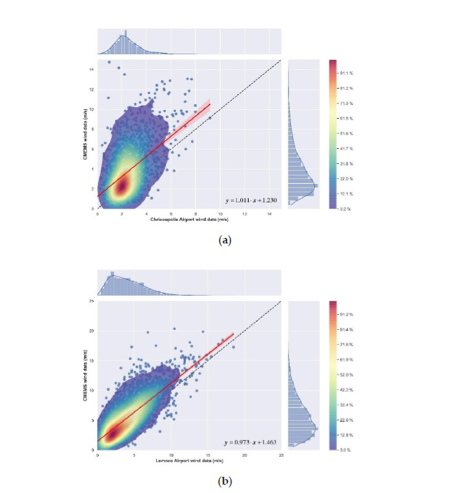The EU-funded ODYSSEA project has published findings on the distribution of offshore winds over the Thracian Sea and its potential use for energy production, concluding that two areas checked are classified as “Excellent” in the wind power potential scale, according to international standards.
Such results are important as the offshore wind energy sector is expected to grow exponentially in the EU over the next decades. Advances in floating turbines operation, costs reduction and environmental impacts minimization, in parallel to the newly introduced Green Deal decarbonizing policy, will boost the marine renewables sector. Although currently the UK and China lead in offshore wind power production, the EU plans to install in all European Seas at least 240 GW by 2050 producing cheap and green electricity for millions of households.

“Through the European Green Deal, the European Union (EU) has set a target to reach total decarbonization and achieve energy efficiency for its members by the year 2050. To achieve this ambitious goal, the power production sector would follow the Clean Energy Transition pathway, with renewable energy sources at the epicentre of such conversion. In this gradually changing energy mix, the offshore wind industry is expected to play a significant role, experiencing a considerable increase in the coming several decades,” the authors of the study wrote.
The study, published in the leading Energies journal on 10 June 2021 and on the ODYSSEA website, is titled “Wind Climate and Wind Power Resource Assessment Based on Gridded Scatterometer Data: A Thracian Sea Case Study”, and was produced by ODYSSEA researchers Nikolaos Kokkos, Maria Zoidou, Konstantinos Zachopoulos and Georgios Sylaios of the Democritus University of Thrace (DUTH), together with Meysam Majidi Nezhad and Davide Astiaso Garcia of the Sapienza University of Rome.
The researchers noted that though for now European offshore wind farms are concentrated primarily in the North Sea and the Irish Sea, development in the Mediterranean is already beginning to take place, with a 30 MW wind farm expected to be installed off the coast of southern Italy soon.
“The most crucial suitability selection criterion for wind farm siting (i.e., the wind resource availability), in conjunction with the presence of a wide continental shelf ensuring relatively shallow depths and an appropriate distance from shore, could be met over the Thracian Sea in the Northern Aegean,” the researchers explained, noting the importance of GIS mapping of offshore marine areas and uses in locating the best sites for wind farms.
In their research, the team used Copernicus Marine Service CMEMS scatterometer wind data from 2011-2019, together with numerical model reanalysis, to assess the wind energy content and annual wind energy production.
“The basic differences in the present analysis, in relation to previous works focusing in the area, lie in the fact that our analysis is based on gridded data which covers extended offshore zones and quantifies the influence of each directional bin on final wind energy production,” whereas “earlier wind power assessments in the area utilized limited offshore buoy data or data from nearshore, land‐based stations”, the researchers said.
The team found that spatially‐averaged wind power density reaches 513 W/m2 at the Lemnos Plateau and 507 W/m2at the Dardanelles region, and the wind energy production for the selected wind turbine may reach 7,2 GWh/yr and 7,5 GWh/yr, respectively. Lower capacity factors were computed at the nearshore Thracian Sea zone, producing between 3,0 and 5,6 GWh/yr of additional energy, they said.


